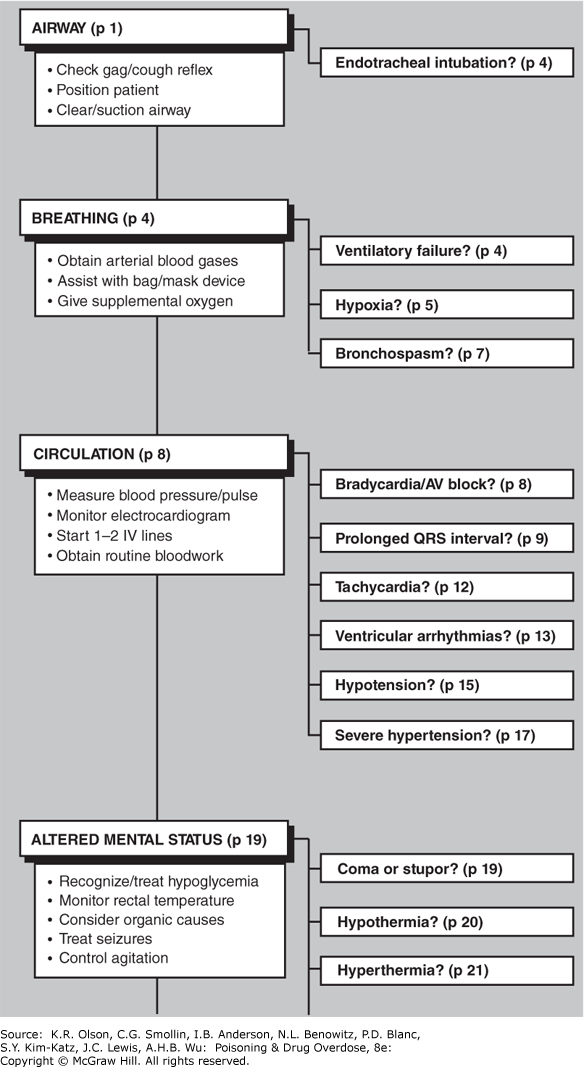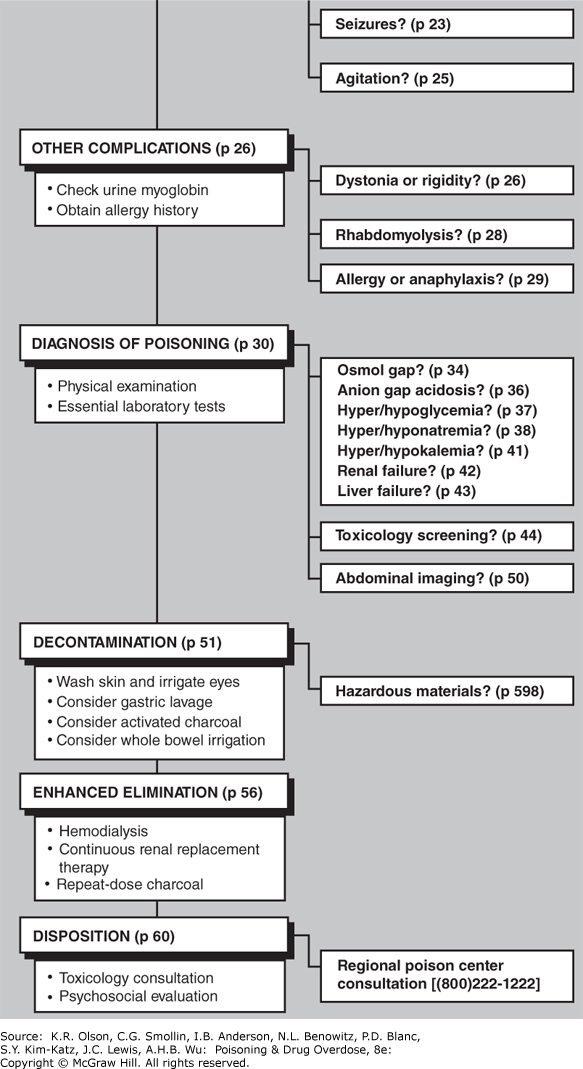Medication and drug overdoses, adverse drug reactions, hazardous chemical, and environmental and occupational exposures are frequent reasons for which patients seek evaluation and medical care in emergency medical systems. Even though they may not appear to be acutely ill, all poisoned patients should be treated as if they have a potentially life-threatening intoxication. Figure I-1 provides a checklist of emergency evaluation and treatment procedures. More detailed information on the diagnosis and treatment for each emergency step is referenced by page and presented immediately after the checklist. For immediate expert advice on diagnosis and management of poisoning, call a regional poison control center (in the United States, toll-free 1-800-222-1222).
FIGURE I-1. Checklist of Emergency Evaluation and Treatment Procedures


Checklist of emergency evaluation and treatment procedures.
When treating suspected poisoning cases, quickly review the checklist to determine the scope of appropriate interventions and begin life-saving treatment. If further information is required for any step, turn to the cited pages for a detailed discussion of each topic. Although the checklist is presented in a sequential format, many steps are often performed simultaneously (eg, airway management, naloxone and dextrose administration, and gastric lavage).